A powerful network of charging stations IONITY has reached already Spain
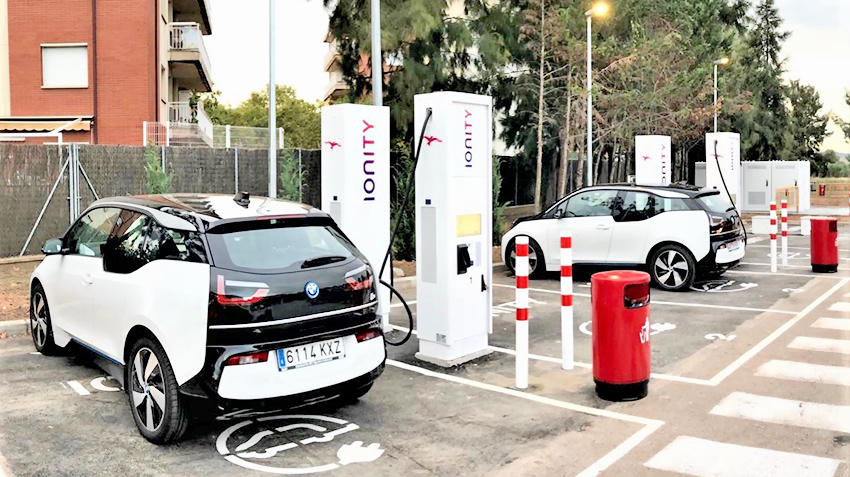
24 October 2019
Near Barcelona, has opened the first station IONITY-CEPSA fast charging of electric vehicles, and Cambridge has reduced the charging time to 6 minutes
German consortium IONITY together with diversified energy company CEPSA has launched its first powerful charging station (HPC) in Spain. Located in the municipality of Pali (province of Barcelona) a new charging station has a 4-supercharger with a capacity of 350 kW each (photo on the splash screen). These chargers are compatible with European standard combined charging system (CCS) and reduce the charging time for current and future models of electric vehicles. High-power charging station HPC IONITY has a capacity of 1.2 MW for 4 posts of charging, becoming one of the fastest in Spain. In addition, IONITY laid the provision for two additional charging posts, which can be added depending on demand. Accordingly, the share of CEPSA will have a supply of electricity for these facilities with renewable 100% energy sources.

By the end of 2020 years network stations HPC consortium IONITY in Europe should reach 400 points with 6 charging posts on each
The first charging station IONITY Spain (became the 15th country connected to the network IONITY) has also opened a new Chapter in expanding pan-European network of high-speed charging stations, in order to make long distance travel with electric cars commonplace. Station in Palese (near Barcelona) another herd of 340 stations of the type HPC deployed in the framework of the project EUROPE, covering the main routes motorways of the 13 EU States, as well as all 9 transit corridors of the core network TEN-T (Trans-European Transport Network). The EUROPE project is co-financed by Brussels.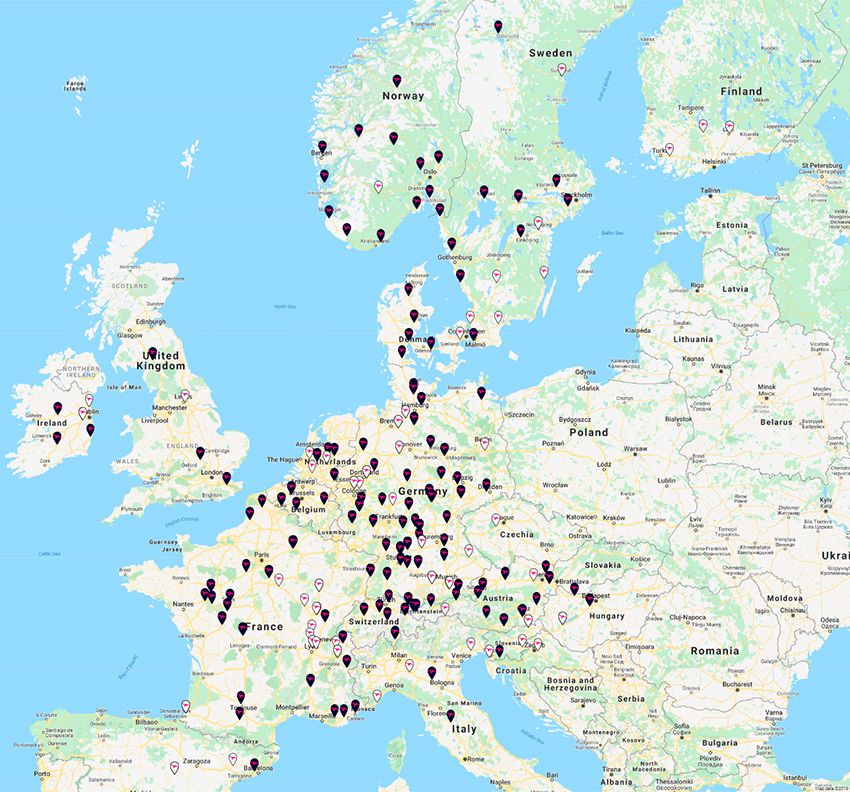
The current status of the network of charging stations HPC-IONITY October 2019 (the dark marks – the existing HPC, and light – construction). If you compare with the prospective network map for the year 2020, it has to grow and grow (by the way, in the face of obvious discrepancies with the penetration of the network in Poland and the Baltics, and Finland and Spain)
In July 2018, CEPSA signed a cooperation agreement with IONITY for placement of the HPC in the network of its filling stations and one HUNDRED in Spain and Portugal. Currently, CEPSA has in Spain and Portugal, an extensive network of gas stations numbering about 1800 stations. Team CEPSA offers a clear concept of customer orientation, innovation, added value, security and loyalty. The CEPSA company sells the highest quality fuel at its filling stations, and also offers many other products and services.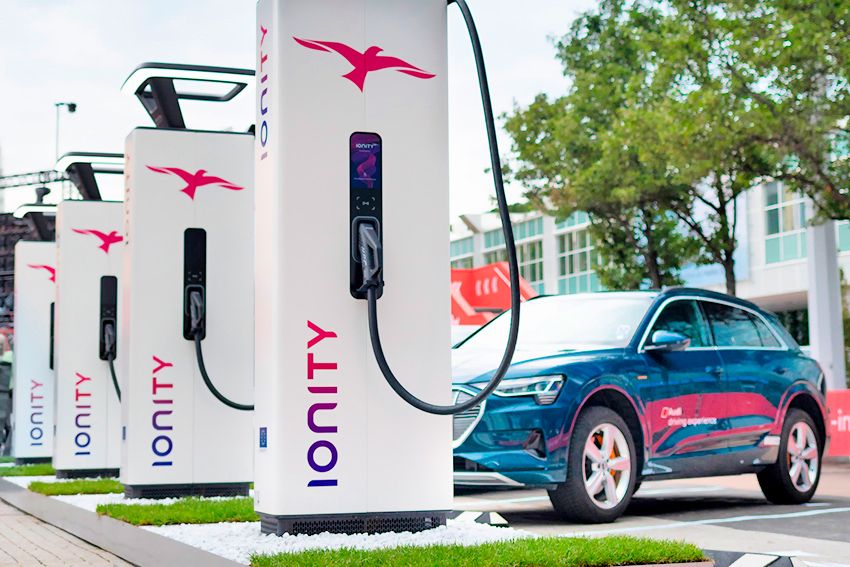
At the IAA'19 company IONITY presented supercharger High-Power height 2.6 meters with a light ring on "top" that informs the brightness and color level of electric vehicle charging
By the way, at the IAA'19 consortium IONITY presented brand new charger High-Power height 2.6 meters, which is equipped with the original multi-functional led light ring – Halo. This "elektronaladka" becomes at night a kind of a beacon on the road, making it easier for drivers search for charging stations at gas stations. In addition, the ring of light change its brightness and color informs about available or soon expiring chargers, and also creates a well-lit area to facilitate orientation of drivers charging their electric at night. In addition to led beacon, new charger IONITY HighPower are equipped with advanced touch screen interface man-machine (HMI) that facilitates the charging process of an electric vehicle as much as possible.background: the consortium IONITY (name registered as a global brand) is based in Munich. He was founded in November 2017 as joint venture leading automobile manufacturers such as BMW Group, Daimler AG, Ford Motor Company and Volkswagen Group, along with Porsche AG, and from September this year to join Hyundai Motor Group.
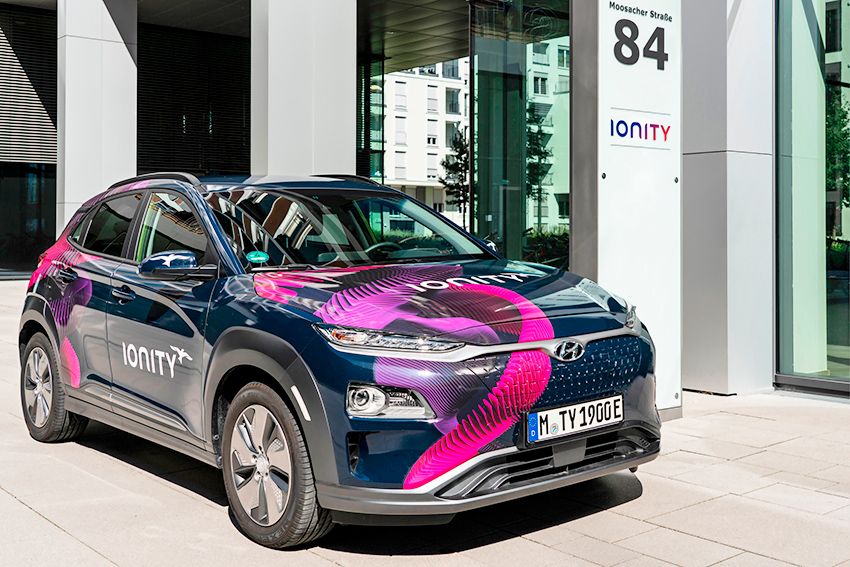
In September of this year HMC became the sixth participant of the joint venture IONITY
The purpose of the JV was the creation of an extensive and reliable European network of charging stations (HPC) with supercharger capacity of 350 kW for fast charging of electric vehicles. This should make a comfortable trip on a long distance electric car a reality. Thanks to rich and powerful co-founders IONITY received strong national and international position. So, in may IONITY opened its 100th charging station high power (HPC), and moves rapidly towards achieving the goal of expanding the network of HPC to 400 stations by 2020. Despite the complexity of the search for available sites on the main roads of Europe, IONITY already equipped with 95% of them.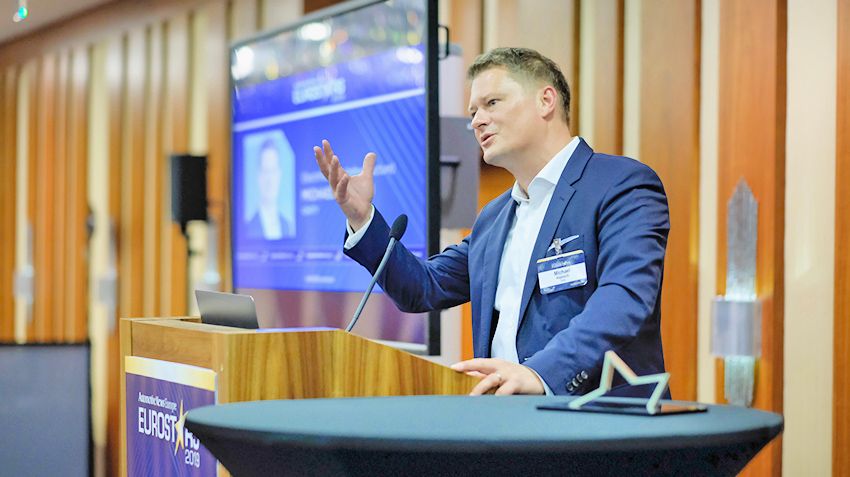
CEO IONITY Michael Hayes was selected as one of the winners of the prize Eurostars 2019
CEO IONITY Michael Hayes said at the awards ceremony at the Frankfurt motor show IAA'2019: "I'm very happy that I was chosen as one of nineteen winners of the award for Eurostars 2019. I can with absolute certainty say that this recognition is entirely thanks to the incredible work of the whole team IONITY, not just me as a person. Our network of high-performance charging stations will make a significant contribution to a revolution in the field of electric mobility and will help to expand the implementation of electric vehicles across Europe".background: CEPSA is a global integrated energy company that covers all stages of the value chain of hydrocarbons, in addition to manufacturing products from raw materials of vegetable origin, and are also increasingly present in the sector of renewable energy sources.
The company has 90 years of experience and a team of approximately 10,000 employees who combine technical competence with creativity. The company is represented on all five continents in the following areas: exploration and production, refining, chemicals, marketing, natural gas and electricity, as well as trade.
PS Yes, supercharger to 350 kW and, of course, well, but here's the recent two vysokosnyj pepper from the Cambridge (CEO Jean de La Veriler and CTO Alex Groombridge), organized, supported by a venture capital Fund Cambridge Enterprise, the startup Echion Technologies, said that supposedly found a replacement for graphite in lithium-ion batteries (material, of course, "top secret") and has already demonstrated battery charging in just 6 minutes (!) instead of the standard 45 minutes.
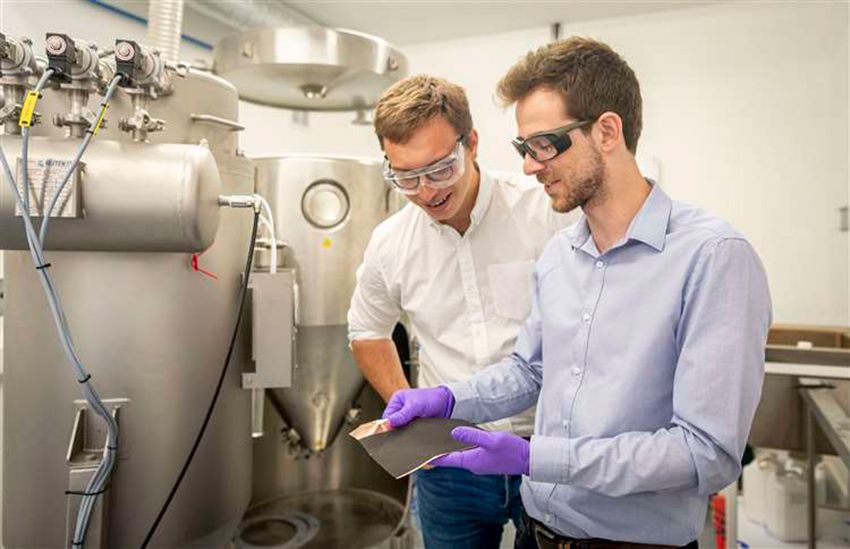
CEO Jean de La Veriler and CTO Alex Groombridge from startup Echion Technologies demonstrate innovative wonder material for lithium-ion batteries, which will reduce the time of their charging up to 6 minutes and at the same time make fireproof!
Moreover, this technology provides another, but the key bonus lithium batteries cease to be samouskorenie and explosive!In this series ultrarevolutionary technology (by scaling the production of 1 kg to 1,000 tons) are going to run next year.
So serial Porsche Taycan with his record-breaking 23 minutes for 80% charging from 450-kilowatt of supercharger (by the way HPC from IONITY) nervously smokes on the sidelines...
However, even if this is not another "scientific duck", then IONITY fit to develop a "hypercharger" with as much power in megawatts and more than one post of charging, however, it cooled only water-energichnymi with rosettes and will not do and will require almost superconducting cables. Another reasonable question – what external grid handle that?! By the way, hypothetically, if, instead of a 45 minute charge cycle (i.e., ~30 BEV per day) to be based on the cycle charging in 6 minutes a day using this super-HPC will be able to pass over 200-210 electric vehicles, and it is on the one hand would reduce the need for network density (in fact, only if the charge "trains" will be robots, and they are unmanned will be built in a night turn on the charger...), but on the other clearly will increase the load on the supply mains, with all the consequences in terms of investment for development. And who is behind all this "music" is going to pay?
P. P. S. by the Way, according to the most IONITY – power 350-kilowatt HPC is enough to charge 60 000 (!) mobile phones or power 3500 incandescent bulbs of 100 watts. So that here the main part is getting the need of electricity is from environmentally friendly ("alternative") sources, otherwise the whole idea of struggle with the help of electric vehicles with the heating of the atmosphere due to the emissions of CO2 is out of business.
.
|
|
|
Element was not found.








